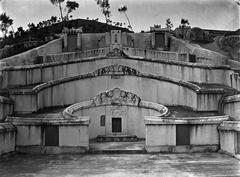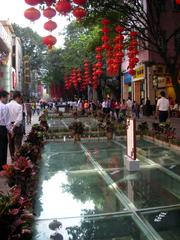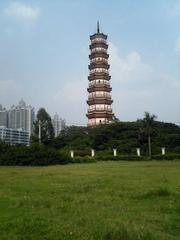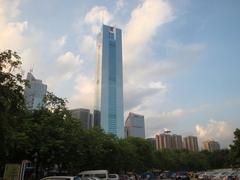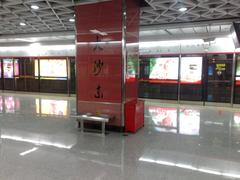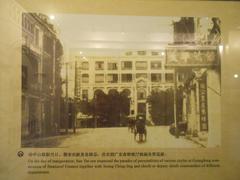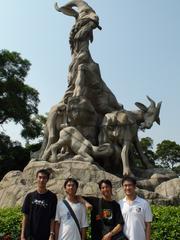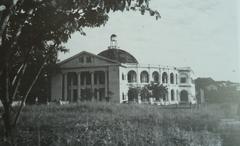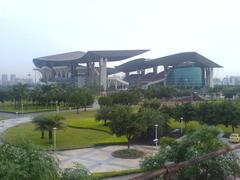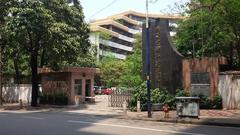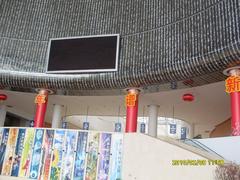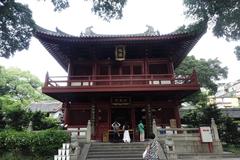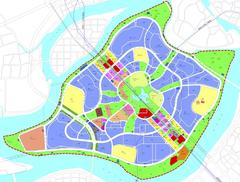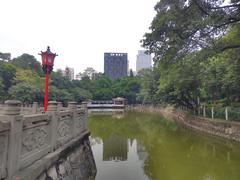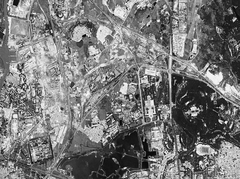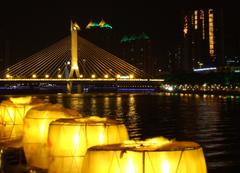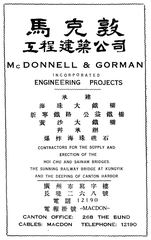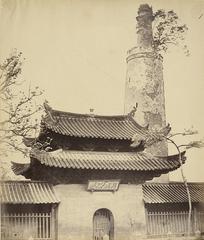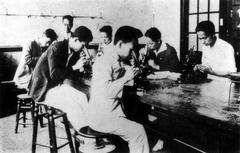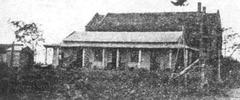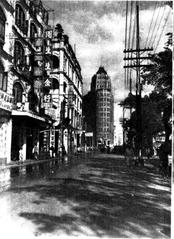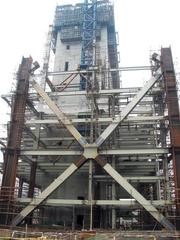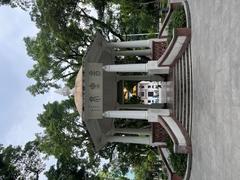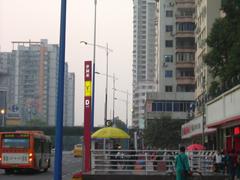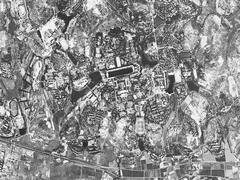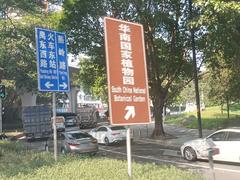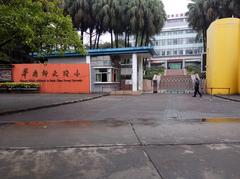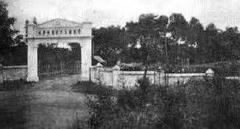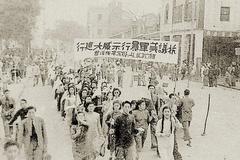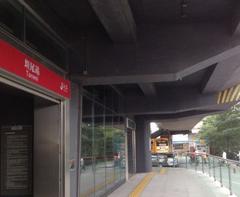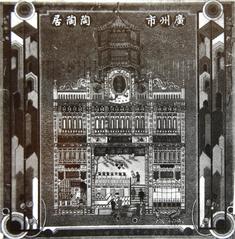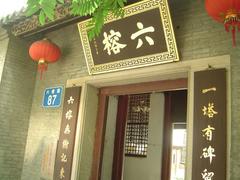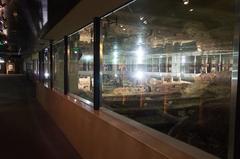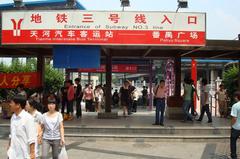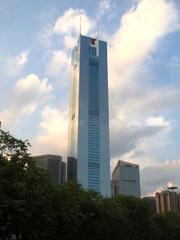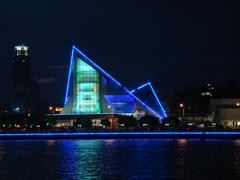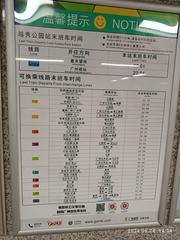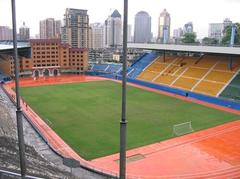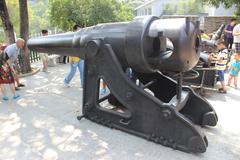Xinlong Guangzhou Visiting Hours, Tickets, and Historical Sites Guide
Date: 04/07/2025
Introduction
Xinlong District, nestled within the vibrant city of Guangzhou, serves as a living testament to southern China’s rich historical and cultural tapestry. This guide provides a detailed overview of Xinlong and Guangzhou’s historical evolution, significant cultural landmarks, essential visitor information—including visiting hours and ticketing—and practical travel tips for a rewarding experience. Whether you’re a history enthusiast or a first-time traveler, this guide equips you with everything needed to explore the unique blend of tradition and modernity that defines this dynamic region (thenandnows.com, sourcifychina.com).
Table of Contents
- Introduction
- Historical Context of Xinlong and Guangzhou
- Lingnan Culture and Heritage
- Urban Development and Modern Significance
- Key Historical Landmarks: Visiting Hours & Tickets
- Accessibility, Guided Tours, and Special Events
- Preservation and Modern Challenges
- Practical Visitor Tips
- FAQ
- Conclusion
- Sources
Historical Context of Xinlong and Guangzhou
Early Settlement and Ancient Foundations
The history of Xinlong and Guangzhou spans over 2,200 years, beginning with the Baiyue people during the Western Zhou dynasty (c. 1046–771 BCE). By the Spring and Autumn period, settlements such as Nanwu Cheng laid the groundwork for the city’s urbanization (thenandnows.com). The city’s legend as the “City of Five Goats” endures as a symbol of prosperity.
The Qin dynasty established Panyu (modern Guangzhou) as the capital of Nanhai Prefecture, making it a vital administrative and trading center due to its strategic position at the crossroads of rivers and the South China Sea (sourcifychina.com).
Dynastic Growth and Maritime Significance
Guangzhou flourished during the Han dynasty as a major port on the Maritime Silk Road, attracting traders from across Asia and beyond. The Mausoleum of the Nanyue King is a remarkable archaeological relic from this era (travelchinaguide.com). The city’s prosperity continued under the Tang, Song, Yuan, Ming, and Qing dynasties, each contributing to its commercial and cultural expansion (thenandnows.com).
Colonial Encounters and Modernization
Guangzhou became China’s only open port to foreign trade before the Opium Wars. Following the Treaty of Nanjing, it transformed into a treaty port, welcoming Western merchants and influences. The city was also pivotal in the revolutionary movement led by Sun Yat-sen, contributing to the fall of the Qing dynasty and the birth of the Republic of China (thenandnows.com).
Lingnan Culture and Heritage
Xinlong’s identity is deeply rooted in Lingnan culture, known for its commercial vitality, craftsmanship, and adaptability. Iconic sites like the Chen Clan Ancestral Hall and the Temple of the Six Banyan Trees showcase exquisite Lingnan architectural and artistic traditions (chinadiscovery.com). The district is also home to religious diversity, with landmarks such as the Huaisheng Mosque and Guangxiao Temple reflecting centuries of Buddhist and Islamic influence (touristplatform.com).
Urban Development and Modern Significance
Today, Guangzhou is a global metropolis and the capital of Guangdong Province. With over 14.5 million residents, it anchors the Pearl River Delta’s economic engine and hosts the renowned Canton Fair (sourcifychina.com, thenandnows.com). Xinlong, as part of this urban expanse, offers a balance of preserved tradition and modern amenities.
Key Historical Landmarks in Xinlong and Guangzhou: Visiting Hours & Tickets
1. Chen Clan Ancestral Hall (Chen Clan Academy)
- Location: No. 34 Enlong Li, Liwan District
- Hours: 8:30 AM–5:30 PM (closed Mondays)
- Ticket: CN¥10
- Highlights: Exquisite Lingnan architecture, folk art museum
(chinadiscovery.com)
2. Temple of the Six Banyan Trees (Liurong Temple)
- Hours: 7:30 AM–5:00 PM
- Ticket: CN¥10
- Features: Ancient pagoda, Buddhist relics
(thebrokebackpacker.com)
3. Guangxiao Temple
- Hours: 8:00 AM–5:00 PM
- Ticket: CN¥10
(touristplatform.com)
4. Huaisheng Mosque
- Hours: 9:00 AM–4:30 PM
- Ticket: Free
- Note: One of China’s oldest mosques, open to respectful visitors
5. Zhenhai Tower (in Yuexiu Park)
- Hours: 8:30 AM–5:30 PM
- Ticket: CN¥10
- Features: Panoramic city views, Guangzhou Museum
(chinadiscovery.com)
6. Shamian Island
- Access: Open 24 hours, free
- Features: Colonial-era architecture, riverside promenades
(guangzhoutour.com)
Other Major Attractions
- Yuexiu Park & Five Rams Sculpture: 6:00 AM–10:00 PM, CN¥10
- Canton Tower: 9:30 AM–10:00 PM, tickets from CN¥150 (cantontower.com)
- Museum of the Mausoleum of the Nanyue King: 8:30 AM–5:00 PM, CN¥20
- Baiyun Mountain: 6:00 AM–7:00 PM, CN¥5
- Sacred Heart Cathedral: 9:00 AM–5:00 PM, free
- Chimelong Tourist Resort: 10:00 AM–6:00 PM, tickets vary
- Beijing Road & Shangxiajiu Pedestrian Street: Open daily, shops 10:00 AM–10:00 PM
Accessibility, Guided Tours, and Special Events
Most historical sites are easily accessible via Guangzhou’s efficient metro system and public transportation (asiaodysseytravel.com). Guided tours in English and Mandarin are widely available at major attractions (chinadiscovery.com). Special events, including the Canton Fair and traditional festivals like the Lantern Festival and Dragon Boat Festival, provide unique opportunities for cultural immersion.
Preservation and Modern Challenges
Guangzhou’s rapid urbanization presents challenges for historical preservation. Restoration projects and cultural tourism initiatives, such as Ling Nan Impression Park, support the safeguarding of heritage sites (sourcifychina.com, sg.trip.com). Conservation efforts are ongoing, especially in the face of natural threats like flooding and typhoons.
Practical Visitor Tips
- Best Time to Visit: October–December and March–May for mild weather (best-time.to).
- Ticketing: Most sites charge CN¥10–30; buy onsite or via official websites.
- Language: Mandarin is official; Cantonese is widely spoken; English signage at major sites.
- Etiquette: Dress modestly at temples; remove hats and speak quietly indoors.
- Photography: Permitted at most sites, but check local rules.
- Dining: Try local Cantonese specialties at eateries near historical landmarks.
Frequently Asked Questions (FAQ)
Q: What are typical visiting hours for Xinlong historical sites?
A: Most are open between 7:30 AM and 6:00 PM; check ahead for specific attractions.
Q: How can I purchase tickets?
A: Buy at entrances or through official online channels.
Q: Are English tours available?
A: Yes, at major sites and through reputable tour operators.
Q: Is Xinlong accessible by public transport?
A: Yes, via metro, buses, and taxis.
Q: Are there special events I should attend?
A: The Canton Fair and local festivals offer vibrant cultural experiences—check the event calendar before visiting.
Conclusion
Xinlong and Guangzhou together offer a multidimensional journey through Chinese history and culture, from ancient settlements and dynastic grandeur to revolutionary milestones and modern urban vibrancy. With well-preserved sites, accessible transportation, and a welcoming cultural landscape, these destinations invite travelers to immerse themselves in the heart of southern China. Plan your visit to experience the stories, sights, and flavors that have shaped this remarkable region.
For the latest travel updates, ticket deals, and event information, download the Audiala app and connect with our community on social media.
Sources
- thenandnows.com
- sourcifychina.com
- chinadiscovery.com
- touristplatform.com
- asiaodysseytravel.com
- guangzhoutour.com
- best-time.to
- sg.trip.com
- adventurebackpack.com
